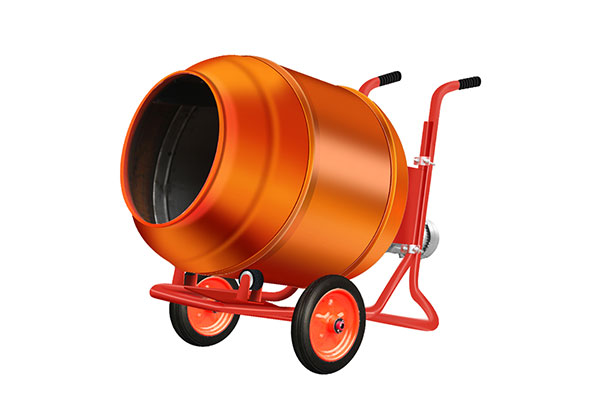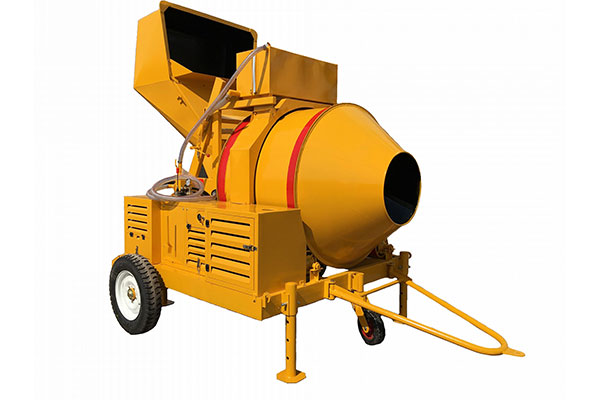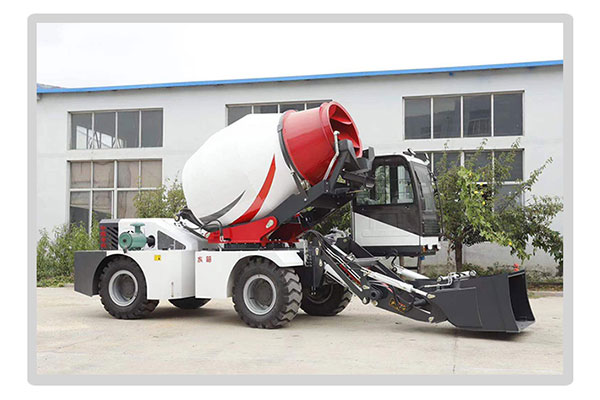How to Choose the Right Concrete Mixer
Choosing the right concrete mixer is essential for ensuring efficient and high-quality results in construction projects, whether you’re a DIY enthusiast or a professional contractor. With a wide variety of concrete mixers available, selecting the best one can seem overwhelming. Here, we’ll break down the key factors to consider when choosing a concrete mixer to help you make an informed decision.

1. Understand Your Project Size and Scope
The first step in selecting a concrete mixer is understanding the size and scope of your project. Smaller tasks, such as laying a patio or walkway, may require a compact, portable mixer, while larger projects, like foundations or roadways, call for larger mixers with greater capacity and power.
- For small projects: A smaller, portable mixer with a drum capacity of 2-4 cubic feet will likely suffice.
- For medium projects: A drum capacity of 6-10 cubic feet is often suitable for moderate construction projects.
- For large projects: Look for industrial mixers with a drum capacity of over 12 cubic feet to ensure fast, efficient mixing.
2. Mixer Types: Portable vs. Stationary
Concrete mixers come in two main types: portable and stationary.
- Portable mixers are lightweight and can be moved easily to different job sites. They are perfect for smaller projects and jobs that require flexibility. These mixers are typically powered by electricity or gasoline.
- Stationary mixers are fixed in place and are designed for larger, continuous jobs, such as commercial construction sites or roadwork. They generally have larger capacities and are powered by diesel engines or other heavy-duty sources.
3. Power Source: Electric vs. Gasoline vs. Diesel
The power source of your concrete mixer impacts its portability, ease of use, and operating cost.
- Electric-powered mixers: Ideal for small to medium-sized projects. They are quieter, require less maintenance, and are more eco-friendly. However, they need access to an electrical outlet, which may limit mobility on larger job sites.
- Gasoline-powered mixers: Suitable for medium to large projects, especially in locations without easy access to electricity. They offer greater portability and power but require regular maintenance and fuel.
- Diesel-powered mixers: Best for large-scale or industrial projects. Diesel mixers are more fuel-efficient and provide the highest power output. However, they are generally more expensive and produce more noise and emissions.

4. Mixer Design: Drum vs. Pan Mixers
Concrete mixers come with different designs that affect how the concrete is mixed.
- Drum mixers: The most common type, drum mixers rotate to mix the ingredients. These mixers are available in a wide range of sizes and are perfect for general-purpose use.
- Pan mixers: Pan mixers have a fixed, circular pan where the concrete is mixed by paddles. These mixers are excellent for mixing concrete quickly and uniformly. Pan mixers are often used in precast concrete plants but can also be beneficial for medium-sized construction projects.
5. Capacity and Output
When choosing a concrete mixer, the drum capacity is a critical consideration. A larger capacity drum will allow you to mix more concrete at once, improving efficiency. The output of a mixer refers to the volume of concrete it can produce in a given time frame, usually measured in cubic feet or cubic meters per hour.
- Small mixers: Typically produce up to 5 cubic feet of concrete per batch, suitable for small jobs.
- Medium mixers: Can handle 6-9 cubic feet per batch, ideal for medium-sized projects.
- Large mixers: Produce over 10 cubic feet per batch, making them the best option for large construction jobs.
6. Portability and Ease of Use
If you’re working on multiple job sites, portability becomes a significant factor. Lightweight mixers with wheels or handles are easier to move. Additionally, features like adjustable stands, quick-release mechanisms, and ergonomic controls make operation smoother, especially for frequent use.

7. Maintenance and Durability
Durability is crucial when selecting a concrete mixer, as it ensures long-term use. Look for mixers made with high-quality materials, such as steel drums and rust-resistant coatings. Additionally, consider how easy it is to maintain the mixer — models with removable drums and accessible components make cleaning and repair more straightforward.
8. Budget Considerations
Finally, your budget will play a big role in determining which concrete mixer to purchase. While it’s tempting to go for the cheapest option, consider the long-term value of a mixer. A higher-quality model may cost more upfront but save you money over time with less maintenance and a longer lifespan.
RoadSky and Concrete Mixer
RoadSky is a professional concrete mixers supplier with many product models. We can also customize them according to customer requirements to meet the different needs of customers. If you are looking for a concrete mixer for your project, you can contact us directly for more information.
Conclusion
Choosing the right concrete mixer for your project is key to efficient and high-quality construction work. By assessing your project’s size, the type of mixer you need, the power source, and features like portability, capacity, and durability, you can ensure that your investment pays off in the long run. Whether you opt for a small electric portable mixer or a large industrial diesel model, the right choice will enhance your productivity and ensure a successful outcome.
FAQs
Clean your mixer after every use to prevent concrete from hardening inside the drum, which can reduce its efficiency and lifespan.
Always wear protective gear such as gloves, goggles, and sturdy shoes. Keep loose clothing and long hair away from the mixer to avoid accidents. Ensure the mixer is on stable ground, and never reach into the drum while it’s in operation.
Concrete begins to set in about 30 minutes, so it’s important to pour and use it shortly after mixing. Delays or leaving the mixture in the drum for too long can cause it to harden, making it difficult to remove and potentially damaging the mixer.
Yes, concrete mixers can be used for mixing a variety of materials, such as mortar, grout, and stucco. However, make sure to clean the drum thoroughly between uses to avoid cross-contamination between different materials.
Regular maintenance includes cleaning the drum after every use, lubricating moving parts, and checking for wear and tear on the motor, belts, and gears. Tighten any loose bolts and inspect the mixer for rust or damage. Proper storage is also essential, especially protecting the mixer from rain and harsh weather conditions.
If your mixer is frequently breaking down, has a damaged or corroded drum, or is becoming less efficient at mixing, it may be time to invest in a new mixer. Loud, unusual noises or significant wear on components can also be indicators.
Smaller portable mixers can usually fit in a pickup truck or large SUV. However, for larger mixers, you may need a trailer or truck specifically designed for transporting heavy equipment.
If concrete hardens in the drum, try using a hammer and chisel to break it up, or use a concrete dissolver solution. Regular cleaning after each use helps avoid this issue. In severe cases, professional servicing may be necessary.
By following this guide, you can select the best concrete mixer to suit your project needs, ensuring smooth and efficient construction work.

